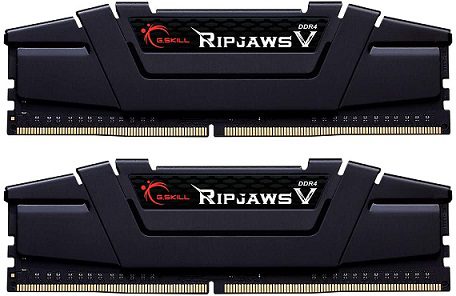Is it important to consider a memory channel before buying a RAM? Does the channel memory affect the speed or performance of the system? Well, if you have similar questions in mind, this article is for you. Here, you’ll find all the information regarding memory channels. So, let’s dive right in.
What is a Single Channel?
A single channel memory is a RAM configuration where you can insert one RAM stick. It’s one of the most common memory channels available out there. A multi-channel Memory always supports a single channel memory, which makes this so popular. Let’s say you have four slots in your motherboard for installing RAM. Now, when you install a RAM stick in the slot, it’ll function as a single channel memory.
Pros and Cons of Single Channel
Pros:
It’s the most convenient form of memory channel
Cons:
This configuration is expensive It’s not aesthetic
What is Dual Channel?
Dual-channel memory support means that you can double the memory bandwidth as compared to a single memory channel support. Let’s say your computer supports a dual memory channel. Now you can install two individual memory sticks and double the bandwidth, which is quite beneficial.
Pros and Cons of Dual Channel
Pros:
Double memory bandwidth More affordable
Cons:
Not as fast as Quad memory channel
What is Quad Channel?
As the name tells, the Quad memory channel comes with four memory lanes and supports four memory sticks. With four memory sticks, you can quadruple the memory bandwidth. Quad memory channel brings along marginal performance boost if you consider gaming.
Pros and Cons of Quad Channel
Pros:
Better Performance Four times the memory bandwidth as compared to a single lane Looks aesthetic
Cons:
Requires an expensive motherboard to support this configuration
What Does Single, Dual, and Quad Channel Even Mean?
Talking generally, if you install one RAM stick in your motherboard, it will run on a single channel config. When you install two memory sticks, it’ll run on a dual memory channel. And when you install four memory sticks, your system will run on a quad memory channel. However, all of the above depends on what configuration does your system supports. You can also install three memory sticks on your computer. But not many systems support this configuration. And in such a scenario, the system will run 2 RAM sticks on a dual memory channel and the remaining on a single channel.
Is installing multiple low memory sticks beneficial
Installing multiple lower capacity memory sticks as compared to a single high capacity one can make a decent difference. Although the memory capacity won’t differ, the memory bandwidth will double or quadruple, which is quite a benefit. Lower capacity memory sticks also help to take some load off the computer. Also, more memory bandwidth allows the entire system to perform better.
Dual Channel vs. Single Channel Memory: Not That Big of a Difference for Gamers?
If you compare a single-channel memory with dual-channel memory, you won’t find much of a difference. An experiment showed that a computer with a single channel 16GB RAM and another one with two 8GB sticks performed in a more or less similar fashion However, the only viable difference was the CPU usage. The CPU usage in a single channel memory lane was higher because of the Lower bandwidth. And the CPU usage in a dual-channel memory was 10-20% lower as compared to the single-channel one. This was maybe because of the extra memory bus and bandwidth that comes with dual-channel memory. All in all, the single and dual memory channels do not make a large difference for gamers.
RAM Performance Benchmark: Single-Channel vs. Dual-Channel – Does It Matter?
Now, whenever someone is building a PC, they tend to ignore the memory type. People prefer more memory over the channel type. And to some extent, it is understandable. However, installing quad-channel memory sticks when your system supports dual is foolish. It can lead to incompatibility and stability issues. Most laptops are configured with a single memory stick rather than a dual-channel memory if you have ever noticed. Do you know why it is so? Well, according to the reports, computer manufacturer MSI stated that there’s a negligible difference between a single-channel memory and a dual-channel one. It’s the reason why most laptops come with a single channel memory. Although there are certain advantages and disadvantages of both these memory channels, the difference is still not significant.
Which memory type should you go for?
The right type of memory channel depends on what your needs are. People prefer multi-channel memory over single-channel ones because of their affordable nature. Multiple channel memory also looks quite aesthetic as compared to single-channel memory. Multiple channel memory systems are compact, easy to install, and more economical. Also, if one RAM stick fails to operate, you can rely on the other one. However, this is not possible with a single channel memory. If your single-channel memory fails, you won’t be able to operate the computer until the new memory arrives. Also, single-channel memory systems are quite expensive.
Conclusion
To wrap it all up, single, dual, and quad-channel configuration tells us about the number of RAM sticks you can install on a system. Single denotes one stick, dual denotes 2, and the quad denotes 4 RAM sticks. Considering the difference, the single-channel memory type has the least bandwidth. And the dual and quad-channel memory types have better bandwidth. This bandwidth can make a difference when it comes to daily usage or for general purposes. However, extra bandwidth fails to make any difference when it comes to gaming. If you consider the affordable nature, multiple channel memory is more affordable. So, you can go for a dual or quad memory if money is a constraint. Comment * Name * Email * Website
Δ








![]()